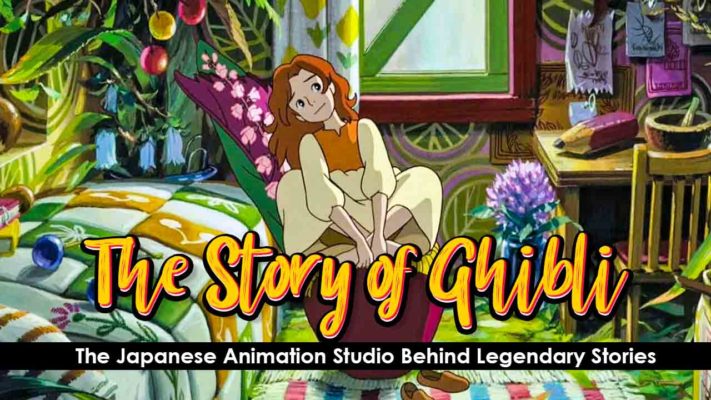
Ghibli Turns A Year Older Adding One More Feather In The Cap
One of my first memories of watching a non-Miyazaki film produced by Studio Ghibli is how the congested neighbourhood was being bombed like a tree has shaken all its flowers in some poetic frenzy. Embers are flying away in the distance like birds with two orphan children rummaging through the menace surrounding them to salvage whatever is left of what previously used to be their neighbourhood. The grave destruction that the bombing has resulted in at once transports you to exceedingly harsh realities of World War II, beyond textbook summarizations.
Grave of the Fireflies (1988) has remained a singular experience of watching Ghibli film, merciless in its juxtaposition of hope and desolation, Isao Takahata’s first cinematic splendour infused fantasy, history, and humanity into its making. Isao Takahata was also the co-founder of Studio Ghibli, the Japanese animation studio that opened in collaboration with Hayao Miyazaki in June 1985. As Ghibli will turn a year older within a couple of months, we reminisce the sudden demise of Takahata mingled with the hushed rumour of Ghibli shutting down forever.
Recollecting The Opulence Of Studio Ghibli
The iconic Studio Ghibli has contributed perhaps the finest gems to the Golden Age of the Japanese animation industry, covering a range of topics like female sexuality, teenage isolation, mythical crusades, war crimes, and fantasia. Ghibli has churned several fantasy dramas unparalleled in their conception, and narration alike. They have made us reel at the wonders of some of the critically acclaimed films like Mirai, Princess Mononoke, Spirited Away and Whispers of the Heart till Hayao Miyazaki’s retirement in 2013. Ever since then we have seen less of Ghibli’s wonders, except The Red Turtle and Boro the Caterpillar.
To Ghibli devotees, its productions are not just a brief recluse into the fantasy world of Tokyo, Yokohama or the enchanted Shiratani Ravine but also a classic take on social issues, fairy tales, myths, and culture. Ghibli is timeless, a particularly historical feat achieved by stalwarts Miyazaki, Tahakata, Toshio Suzuku, and Yasuyoshi Tokuma. No two films can be lumped together with their separate identities dissolved into one; all the credit goes to Ghibli for delivering animation films into a sacred pedestal, reaching out to the masses, and combining goofy with chilling.
Poetic Justice In Ghibli Animations
Spirited Away has been one of the most critically acclaimed, Miyazaki production, and one of the finest to merge impressionistic elements into its plot. The white noise of its scenery floating away somewhere into the horizon that is populated by the fluffy mass of white clouds. In one of the popular interpretations of this scene, Spirited Away tributes the Japanese concept of empty space (Ma) restoring a sense of peace and tranquillity in the landscape.
Spirited Away is an exemplary demonstration of the spiritual and fantastic, balancing the realms of its mundane and surreal that the protagonist, Chihiro travels through. These are the very reasons why this world resonates so well within every single movie buff. The narrative infuses quirky creatures, pinned against bright colors, where frogs talk and head pop with several allusions to Japan’s economic condition during the 1980s. The universality of “dream element” remains omnipresent. In this universe of Miyazaki and Takahata, the magical continuously tantalizes the real, and never for once, the viewers are spared of their brutal discrepancies.
Ghibli films have frequently taken artistic liberties to infuse graphical violence into it, while at the same time never letting go of its aesthetics. Similarly in Grave of the Fireflies, one of the finest emblems of Ghibli’s animation, the grotesque accentuates the other-worldly segments- the gunpowder tainted brown sky as the dead mournfully looks at the living.
As a viewer, you would be compelled to be engrossed into this perfectly mismatched world, lest the spell breaks! Who would not love to imagine cats taking metro rides watching the urban edifices whizzing past, where the dreamlike flying sequences above the hustle-bustle of city life bring back to readers’ mind Mikhail Bulgakov’s The Master and Margarita (Whispers of the Heart)? Or a turtle metamorphosing into a red-haired woman (The Red Turtle)? The Red Turtle simultaneously reinforces the eternal bond of man and nature, a theme hitherto untried in the animation world. The best moments of Ghibli productions are always tainted with a glint of sadness imbued deep within the magical, instantly striking a chord within the viewers.
An Attempt To Reinstate The Best Of Ghibli World
Popular tropes like political allusions, mythical elements, symbolisms sacred in Japan, and the mundane have rendered Ghibli a sacred macrocosm to its creators, unique and convincing. Sound and visuals elements go into the making of this “experience”, these visual extravagances that never appear to be out of place. In the post Miyazaki Ghibli franchise, it would not be unexpected to watch some of its productions foray into online streaming channels, like Ronja the Robber’s Daughter that was made as TV series by Miyazaki himself.
The show was instantly a hit, winning the prestigious Asian Television Awards and International Emmy Awards. It is so much better than watching the brand Ghibli, dissolving into the infinite play of nothing over the passage of time.














